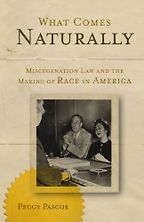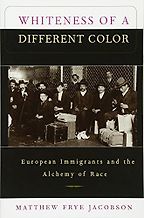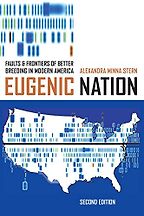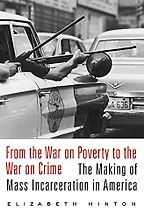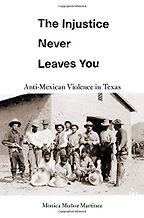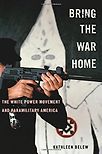White supremacy is our subject. Your selections made me realize what a multifarious topic it is. Before we get to the books, how do you define white supremacy?
I’m glad to start there, because many people misapprehend what historians mean by the term. When historians say ‘white supremacy’, what we’re talking about is not only individual racist beliefs, but also a broad system of laws, norms and customs that create a society with unequal opportunities for people based on race. It’s a complex topic that interacts with a bunch of others, like class and gender.
Many people do not see themselves as racists, yet we have not fully addressed the role of historical racial inequality and present-day racial inequality in our society.
The constitutive power of violence in the establishment of white supremacy was the focus of your early academic work. Can you tell us about the role of lynching in shaping the United States?
When historians talk about ‘constitutive violence’, what we mean is that violence has the power not only to tear down, but also to build. Violence can create power and systems of power, as shown in the work of Ned Blackhawk and other historians of violence. Lynching is a really good example of this.
To understand why, we first have to unpack the idea of vigilante violence. I argue that vigilante violence is an extra-legal act of violence aiming to shore up or create a system of power, meaning it’s not directed at overthrowing the state, which would be revolutionary violence. It’s also not apolitical, like crime; there’s a specific category just for vigilante violence.
From the founding of the United States to the present, lynching was used not only to carry out individual vendettas, but also to create a system of governance and a system of labor control in the United States. The period of lynching that we usually think about is from the 1890 to 1930s, when so many African Americans were lynched in the South. But lynching began much earlier in America: by the time of the Declaration that Independence, all kinds of people are lynched (for all kinds of reasons) across the country in the interest of shoring-up a racialized, gendered system of governance.
White women who won’t get married were being lynched in Wyoming; Mexican-Americans were lynched in huge numbers around the 1915 Mexican Revolution in South Texas; labor activists were lynched in the Northwest. Lynching is a really good example of the use of violence to create and propagate a stratified system of governance.
What Comes Naturally, which won historian Peggy Pascoe posthumous prizes, is your first selection.
I’m a huge fan of this book because it shows how deliberately the system of white supremacy was built. What Pascoe does in What Comes Naturally is to show how laws against interracial marriage were constructed in the late 19th and early 20th century as part of establishing the Jim Crow order in the south, and then the system of white supremacy that we’re familiar with today.
She does this in beautiful writing. I teach it in my 20th century survey class sometimes because I think it’s such a great example of how a historian can convey information. She uses individual cases: for example, someone, a clerk, is in charge of determining whether or not somebody is white. She really takes us through how these laws were implemented and challenged in all regions of the United States. Before bans on interracial marriage were declared unconstitutional in the 1967 Supreme Court case Loving v. Virginia, which made it legal to marry across racial lines, a majority of people polled objected to marriages that crossed racial lines.
Five Books interviews are expensive to produce. If you're enjoying this interview, please support us by donating a small amount.
Pascoe shows that by ten years after Loving, people surveyed supported such marriages and forgot they ever opposed them. What we see is that people who had strongly supported the entrenched system of white supremacy could completely change their social beliefs. This evidence speaks to something that is hard to comprehend about our current moment, which is: what happened to overt racism between the civil rights movement’s successes and the new emergence of racism in this moment? That was one of the fundamental questions I was looking to address in my book.
It seems laws about miscegenation collided with longstanding laws and customs regarding white men’s sexual freedom. What does What Comes Naturally teach about the dominance of men in erecting the system of white supremacy, along with white women’s role in the system and its differential impact on women of color?
In any system of white supremacy, there’s a hyper-focus on the production of white babies, so it becomes really important to regulate white women’s sexuality. But in American history, men haven’t been regulated in the same way. For a white man to have an interracial child has been, at various moments, part of terroristic violence against communities of color or profitable, when enslaved women are involved.
So, white men’s sexual freedom wasn’t anathema in the way that it was for white women who crossed that line. Pascoe shows that couples were more heavily penalized when it was white women who were involved in interracial relationships. Those couplings were the subject of felony laws and the harshest penalties by the state. That goes to show that the interracial bans were oriented around men’s sexual freedom and women’s sexual service to the project of white supremacy.
The white power movement, which is the substance of my book, is not the totality of white supremacy. My book is looking at a tiny subset of white supremacy, a tiny subset of people who hold racist beliefs and carry out racial violence in support of those beliefs. The people I write about are concerned about racial annihilation, a threat they see as coming from either the failure of white women to have a sufficient number of children or the hyper-fertility of other people. Women’s reproduction has always been deeply connected to the project of white supremacy.
Yale historian Matthew Frye Jacobson’s Whiteness of a Different Color is your next book.
Having studied and done my graduate training with Professor Jacobson, I have a soft spot for this book. Whiteness of a Different Color looks at how ethnic groups in the United States in the early 20th century, who were not considered white at the time, became assimilated into the idea of a Caucasian or white majority. He’s looking at Irish immigrants, Polish immigrants, Jewish immigrants and others. And of course there are differential levels of assimilation. He identifies that by 1924, all of these groups, which had been considered nonwhite, were pulled into whiteness.
This text connects with the family history of a lot of readers who now consider themselves white. It shows how that whiteness is historically contingent. What whiteness means is wildly different across time. Readers who are interested in the contingency of whiteness across American history can go as far back as early America; the work of Peter Silvers is about how white ethnic groups in early America functioned as political blocks and only became racialized in the early 1800s. Across time whiteness is a very contingent, changing category.
What does this work tell us about white privilege?
The classic book about white privilege, the best text for really understanding how it works, is George Lipsitz’s The Possessive Investment in Whiteness, which I think was published in the late 90s. It explains how someone who cares deeply about racial inequality and believes in their heart that people are equal can still be participating in and benefiting from a system of white supremacy.
He details all the ways that differential outcomes have been made available to people based on race—outcomes in the realm of housing and education through historical practices like redlining and admissions advantages. He lays out that the problem is not merely that someone’s ancestors might’ve been slaveholders.
The reality is that we all live in a system, and many people who identify as white are still benefiting from a system that advantages whiteness. Understanding all of the different ways that works might be something that needs to happen before the system of white supremacy can be dismantled.
Eugenic Nation is your next book choice on white supremacy.
Eugenic Nation examines the eugenics movement, the project of trying to create an ideal race in twentieth-century United States, with scientific attempts to engineer a strong, healthy, dominant, white race through breeding projects and sterilization—mostly of women of color, people who were mentally ill, or people who were deemed promiscuous. Forced sterilization stayed with us all the way into the 1970s. I teach with Eugenic Nation all the time; it’s very well-written.
Stern outlines the surprising interface between eugenics and a whole bunch of things that outlived eugenics and are now seen as leftist causes, like environmentalism. For instance, the Sierra Club, she shows, comes from eugenicists, and at its origin shared the eugenicists’ goal of preserving space for the white race. She has an excellent chapter about how the completion of the Panama Canal fueled eugenicist thinking; through tropical medicine and immunization against yellow fever, white people were now able to survive even in tropical regions, and some thought this showed they were the master race. There’s also amazing evidence from ‘better babies’ exhibitions in the early twentieth century.
The book shows all of the different ways that eugenicist thinking has intertwined with other elements in our social history. Eugenics was mainstream in the progressive moment: you can see this in the writing of people like Teddy Roosevelt. It was a popular position that only went out of vogue after World War II showed us what the apotheosis of eugenics looks like.
Yet even after World War II, the movement persisted. It was now called ‘hereditarianism’, which was basically just eugenics under a different name. This continued to the 1970s. Stern’s work shows that these ideas persist and pop back up where people stop paying attention. Eugenic Nation focuses mostly on what’s going on in California.
This led me to wonder how white supremacy varies across regions. A lot of scholarship has tried to make racism about an overflow of Southern problems into the rest of the country. For instance, the second iteration of the Ku Klux Klan in 1920s was very popular in Indiana. Some argued that’s because a lot of Confederates settled in Indiana. This goes all the way up to the 1980s, when some scholars were saying the high rate of resettlement from the Confederacy to Idaho explained the Aryan Nation.
I find all of that unpersuasive. Studies show that even during the time of legal segregation in the Jim Crow South, we saw a ton of de facto segregation and inequality in the North. White supremacy takes different forms, but it’s with us in every region of this country and still saturates our systems.
Please take us through your next choice, From the War on Poverty to the War on Crime by Elizabeth Hinton.
People have probably already read The New Jim Crow, which focused on the complex of mass incarceration, which includes policing, the legal system that prosecutes unequally, the prison system, the disenfranchisement of people who have served time, and so on. In this book, Elizabeth Hinton shows how people on both sides of the aisle were involved in propagating that system.
She argues that much of the Democratic-LBJ-era war on crime policy ended up paving the way to the massive implementation of white supremacy—in other words, she shows how bipartisan investment in being ‘tough on crime’ has worked to further white supremacist jurisprudence. She leads up to the expansion of mandatory minimum sentences in the 1990s in the course of the Clinton administration. So it’s a story about how both parties have been culpable, and about how deeply we have to go to unpack this.
Hinton has taken the spotlight resulting from her scholarship and tried to turn it on ways to unwind the systems of white supremacy. Is that kind of extra-curricular work incumbent upon people who study white supremacy?
There is a large group of scholars now producing some really vibrant work on the history of mass incarceration. A lot of those scholars have talked about how interfacing with activists and incarcerated people shapes their work. I think many scholars who write about what I would broadly classify as ‘history of the present’ feel it’s urgent to convey what we’re learning to the public, because there’s so much misconception about our recent history.
I really do believe that coming together in conversation around our history is the beginning point to change. Hinton is someone who works in that way. Other good examples are Heather Thompson, Jenna Loyd, David Stein, Dan Berger. A ton of people have written on incarceration and liberation simultaneously.
Finally, Monica Muñoz Martinez’s prize-winning account of racial violence The Injustice Never Leaves You.
I think it makes sense to conclude with a text that really confronts, head on, the twin problems of the history of white supremacy and contemporary denial or misremembering of that history. In this book, Martinez is interested in a largely ignored example of racial violence—the mass lynching of Mexicans and Mexican Americans in South Texas in the early 1900s.
Five Books interviews are expensive to produce. If you're enjoying this interview, please support us by donating a small amount.
This book both gets us beyond a binary, black-white model of white supremacy, which is a complex phenomenon that impacts a multitude of racial and ethnic groups. And it also shows the lingering power of white supremacist history to shape lives, futures, and more across generations, even when people no longer hold it as an individual ideology. Martinez does this really effectively with stories like a local restaurant that still displayed photographs of lynching into the present, and the profound resistance to creating museum exhibits, highway markers, and textbooks that even mention—much less adequately and sensitively treat—the history of white supremacy in the United States.
Your 2018 history, subtitled ‘The White Power Movement and Paramilitary America’, provides such a crucial piece of the puzzle regarding white supremacy that I’d like you to tell us about Bring the War Home.
Bring the War Home is a history of a very small subsection of white supremacy called “the white power movement.” Some people might recognize it as “white nationalism.” That phrase gets us into some confusion because when people think about nationalism, they think about patriotism and actions in support of the state. This movement is not interested in supporting the government.
It’s a group of people who declared war on the federal government in 1983 and attempted to overthrow the government in order to establish a transnational “Aryan nation.” The white power movement includes people like Klansmen, skinheads, neo-Nazis, militia men, radical tax resisters, and a bunch of other people who came together after the Vietnam War, using a widely held belief in government betrayal to gain recruits. The movement is fueled by the idea that racial annihilation is imminent and that therefore everyone should take up arms. I follow that story to the Oklahoma City bombing in 1995, which despite the fact that it was the largest deliberate mass casualty event on American soil between Pearl Harbor and 9/11 remains a deeply misunderstood event. People still don’t recognize the 1995 Oklahoma City bombing as part of the domestic terror movement. It isn’t included in our common knowledge or our history books.
You underscore that the white power movement is deliberately fragmented to avoid detection.
Exactly. Beginning in 1983, this movement took on a strategy called leaderless resistance, which predates jihadism in this way. The idea is that activists could work in common purpose, with or without communication, with or without direct orders from leadership. They implemented that strategy to foil surveillance and prosecution, in large part because they were frustrated by infiltration of the movement by the FBI and ATF in the 1960s.
The larger legacy of that strategy has been that we have lost sight of the fact that white power was a social movement. Each instance of white power violence is portrayed as the act of lone wolves, when in fact these activists are tied together through deep social connection.
What is the ultimate goal of radical white supremacists?
Their goal is guerrilla acts of violence and sabotage, softening the way for the seizure and maintenance of a white homeland, leading to the eventual overthrow of the United States and perhaps the world. That’s the big imaginative vision of this movement. Of course, individual activists have different versions of the movement’s ultimate goal, but it is a movement that declared war on the federal government in 1983. After 1983, the nation for white nationalism is the Aryan nation. This is why ‘the white power movement’ is a better term: it conveys the radicalism of what they’re trying to do.
Since your book’s publication, you’ve been repeatedly called upon to testify about the United States’ history of white supremacy on television and in various forums, including before Congress. What has your work outside of the academy taught you about white supremacy?
White supremacy is a deeply held and deeply internalized belief system for a lot of people in our country. I’ve learned it is crucial for the United States to eventually have some kind of dialogue about our history of racial inequality. Efforts like the Greensboro Truth and Reconciliation Commission showed that the process of talking to one another about racial violence and the history of racism can bring about consensus and change. We’ve never come together as a nation to address this part of our history. It’s critical that we do so.
Interview by Eve Gerber
October 14, 2019. Updated: April 24, 2025
Five Books aims to keep its book recommendations and interviews up to date. If you are the interviewee and would like to update your choice of books (or even just what you say about them) please email us at [email protected]
